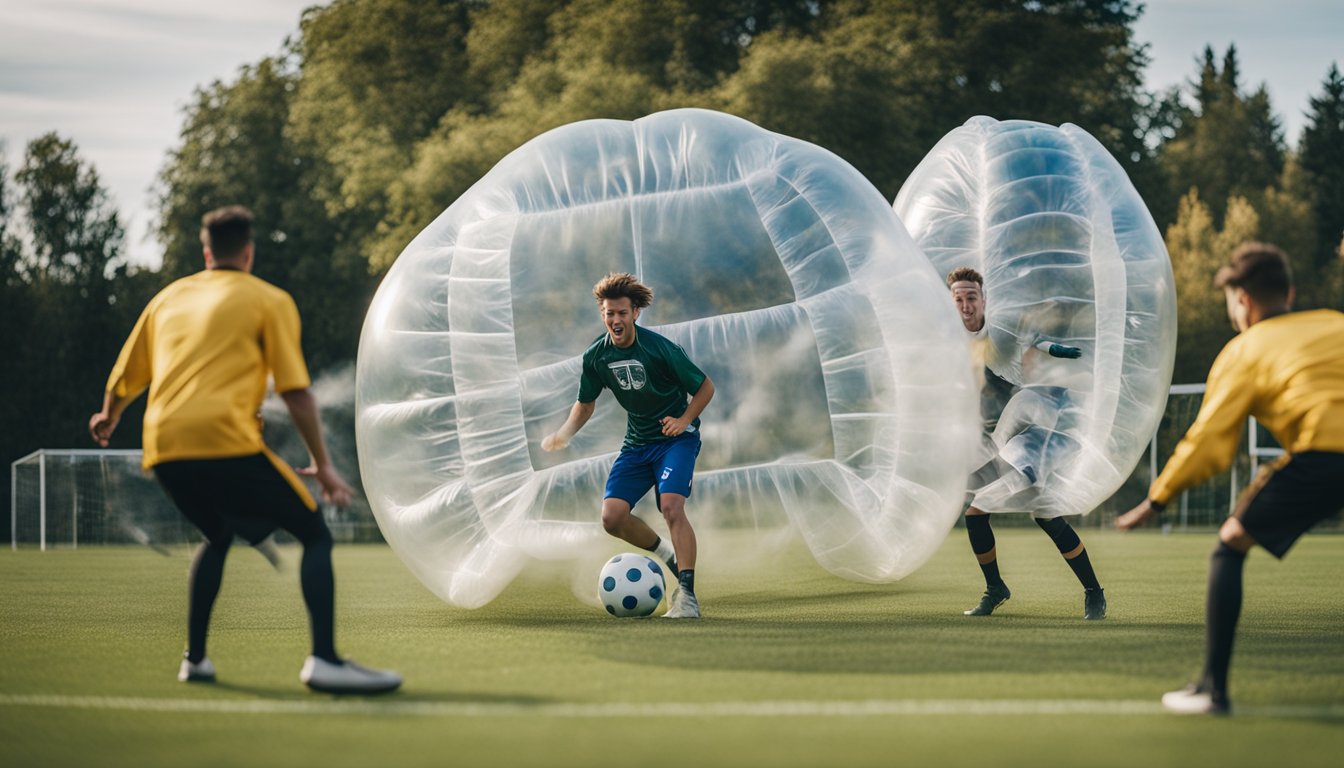
Creative Uses For Bubble Football Equipment
Dodgeball is not only a popular recreational activity but also a powerful team-building exercise. By focusing on strategy, coordination, and communication, participants can develop a stronger sense of teamwork.
Dodgeball features two teams competing against each other to eliminate opponents by hitting them with thrown balls. The game promotes quick reflexes and strategic thinking. Players must dodge, catch, and throw while communicating clearly with their teammates. In a typical game, once a player is hit, they are out of the game. This encourages players to protect each other and plan their moves collectively.
The basic materials needed for a dodgeball game include softballs, cones, and boundary markers. Softballs are crucial as they reduce the risk of injury compared to harder balls. Cones and boundary markers define the playing area and ensure fair play by marking out-of-bounds zones. Depending on the size of the group, you may require multiple balls and cones to maintain an organised game environment.
A well-defined playing area is vital for an organised game. Use cones or other markers to set the boundaries and divide the field into two equal halves. The middle line is where the balls are initially placed and serves as the no-crossing zone for players. Whether playing indoor or outdoor, ensuring the area is free from obstacles and provides enough space for safe movement is essential.
Dodgeball is not just an exciting game but also a powerful tool for team building. It enhances communication, teamwork, coordination, and reflexes among players. This fast-paced sport provides an excellent platform for developing key skills in a fun and engaging environment.
Effective dodgeball play demands clear communication among team members. Players must quickly convey strategies, shout warnings, and signal movements. This practice boosts verbal and non-verbal communication skills, crucial for team-building.
Cooperation is paramount. Teams strategise in real-time, deciding who retrieves balls, who targets specific opponents, and how to cover each other. These interactions foster stronger relationships and a sense of unity. Each play requires collective effort, reinforcing the necessity of working together towards a common goal.
Additionally, the game serves as an ideal icebreaker activity for new groups. It enables participants to quickly bond, breaking initial barriers and forming trust. The shared experience of navigating a high-energy environment encourages camaraderie and mutual respect.
Dodgeball trains players in coordination and reflexes. The need to dodge incoming balls and aim throws precisely enhances hand-eye coordination. These skills are developed through repeated fast-paced actions, requiring swift and accurate movements.
The agility needed to avoid being eliminated sharpens both physical and mental reflexes. Quick decision-making is vital as players must react almost instantaneously to the dynamic nature of the game. Improved agility allows for better manoeuvring and strategic positioning, crucial for staying in the game.
By engaging in such activities, team members enhance their physical abilities while also cultivating patience and strategic thinking. The focus on these skills in a fun and competitive setting makes dodgeball an effective method for improving individual and team performance.
Innovative dodgeball variants cater to diverse group sizes and offer unique twists, enhancing team-building experiences. These variations of the classic game introduce new rules and strategies, ensuring players remain engaged and entertained.
Tailoring dodgeball games to different group sizes is crucial for effective engagement. In large groups, Crossover Revolving Dodgeball works well. Here, players form two circles, one inside the other. The inner circle faces outward, and players must constantly move to avoid being hit by balls thrown by the outer circle. This format keeps everyone active and ensures constant action.
For smaller groups, Marshmallow Dodgeball is ideal. Using lightweight, soft balls, players must hit their opponents softly. Because the balls are light, this variant focuses on accuracy and quick reflexes rather than brute force, making it suitable for younger or less athletic participants.
Mid-sized groups can enjoy Triple Trouble Dodgeball, where three balls are in play simultaneously. Managing multiple threats enhances strategic thinking and teamwork. Players must coordinate and communicate effectively to succeed, making this variant excellent for team-building exercises.
Several popular dodgeball variants bring unique twists to the game:
Jedi Dodgeball: One player from each team is designated as the Jedi, who can heal hit teammates by tagging them, but must stay within a designated circle. This adds a layer of strategy, as protecting the Jedi becomes a priority.
Gaga Ball: Played in a small, confined area, players hit the ball with their hands instead of throwing it. The objective is to hit opponents below the knees. This fast-paced variant requires agility and quick decision-making.
Chinese Dodgeball: Introduces intricate rules where players can re-enter the game by catching a thrown ball while standing on the sidelines. It requires players to stay alert and continuously strategise. This variant maintains high energy and engagement, making it a favourite in youth groups and sports camps.